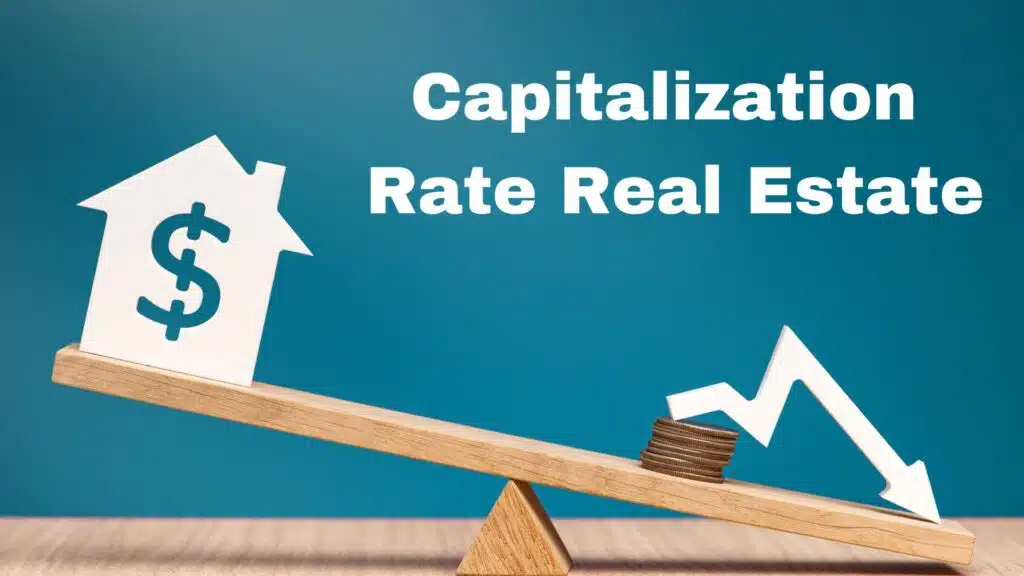Understand what is capitalization rate real estate: a crucial metric for gauging property investment returns. Learn how it influences your real estate decisions.

When it comes to investing in real estate, there are a plethora of terms and concepts that one needs to understand to make informed decisions. One such phrase that comes up a lot in conversations about real estate is the capitalization rate, sometimes known as the cap rate. But what is the capitalization rate in real estate, and why is it so crucial for investors? Whether you’re a seasoned investor or a newcomer to the real estate market, understanding the capitalization rate is essential. It plays a pivotal role in evaluating potential investments and determining their profitability.
In this blog post, we will delve deep into the concept of capitalization rate in real estate. We’ll break down what it is, how it’s calculated, and why it’s important for investors. By the end of this article, you’ll have a clear understanding of what capitalization rate in real estate is and how it can impact your investment decisions.
What Is Capitalization Rate Real Estate?
Understanding the Basics of Capitalization Rate in Real Estate
The capitalization rate, or cap rate, is a metric that real estate investors use to evaluate the return on an investment property. It is basically the ratio of net operating income (NOI) to the current market value of the property. In simple terms, the capitalization rate in real estate gives you an idea of the potential return on your investment, expressed as a percentage.
How to Calculate the Capitalization Rate in Real Estate
To calculate the capitalization rate, you can use the following formula:
Cap Rate = (Net Operating Income / Current Market Value) × 100
For instance, if a property generates a net operating income of $50,000 annually and its market value is $1,000,000, the capitalization rate would be:
Cap Rate = ($50,000 / $1,000,000) × 100 = 5%
This indicates that the property has a 5% cap rate, which means that, depending on its net operating revenue, you should anticipate a 5% return on your investment.
Why Is the Capitalization Rate Important?
Assessing Investment Opportunities
Capitalization rates in real estate are an important tool for evaluating investment opportunities. It provides a quick snapshot of a property’s potential returns, allowing investors to compare different properties based on preferences. When comparing two properties that have identical features but differing cap rates, for instance, the property with the higher cap rate can provide a higher return on investment.
Evaluating Risk
Capitalization rate also helps in assessing the risk associated with a particular asset. Generally, properties with higher cap rates are riskier but potentially more rewarding, while those with lower cap rates are seen as safer but may offer lower returns. This is why investors often use the cap rate as a measure of the level of risk they are willing to take.
Market Comparisons
Cap rates change according to market conditions, property type, and location. By comparing cap rates across different markets, investors can identify which sectors are more profitable and which may pose higher risks. For example, a high cap rate in a booming real estate market may indicate strong earnings potential, while a low cap rate may suggest stability but low returns.
Factors Influencing the Capitalization Rate in Real Estate
Location of the Property
Location is an important factor in determining the capitalization rate of a property. Prime locations with high demand typically have lower cap rates because they are considered less risky. On the other hand, properties in less desirable areas may have higher cap rates due to the risk associated with them.
Property Type and Condition
The type and condition of the property also plays a role in determining the capitalization rate. Commercial properties, for example, have different cap rates than residential properties. Similarly, a newly renovated property may have a lower cap rate than an older one that needs significant repairs.
Market Conditions
Market conditions, including interest rates, economic stability and real estate trends, can significantly affect cap rates. In a rising market, cap rates fall as property values rise, whereas in a downturn, cap rates may rise as property values fall.
Tenant Quality
Tenant quality can also affect capitalization rates. Properties with long-term, reliable tenants are generally viewed as lower risk, resulting in lower cap rates. Conversely, properties with high tenant turnover or unreliable tenants may have higher cap rates due to increased risk of vacancies and maintenance costs.
Pros and Cons of Using Capitalization Rate in Real Estate
Advantages of Capitalization Rate in Real Estate
- Simple and Quick Calculation: The capitalization rate is easy to calculate and provides a quick snapshot of a property’s return potential.
- Comparison Tool: It allows investors to compare different properties and markets effectively.
- Risk Assessment: Cap rates can help assess the level of risk associated with a property.
Disadvantages of Capitalization Rate in Real Estate
- Oversimplification: The cap rate is a simplified metric that doesn’t account for factors like property appreciation, financing, or tax implications.
- Market Sensitivity: Cap rates are highly sensitive to market conditions, which can fluctuate rapidly.
- Limited Scope: The cap rate doesn’t consider potential future income or expenses, making it less useful for long-term investment analysis.
When to Use the Capitalization Rate in Real Estate
Evaluating Potential Investments
Capitalization rates are particularly useful when evaluating potential investments, especially when comparing properties with similar properties. This gives investors a baseline to estimate returns, making it easier to decide which properties might be good investments.
During Property Valuation
Cap rates are also used when valuing property, especially for income-producing properties. Investors can determine a property’s market worth by multiplying the net operating income by the market cap rate.
Understanding Market Trends
Investors and analysts use cap rates to understand broader market trends. By monitoring changes in cap rates over time, they can identify changes in the real estate market, such as an increase in demand or a decrease in property values.
Common Misconceptions About Capitalization Rate
Cap Rate Equals ROI
It’s a frequent misperception that return on investment (ROI) and capitalization rate are equivalent. While both metrics measure returns, cap rate considers only net operating income and market value, while ROI considers other factors such as financing, taxes, and property valuation.
Higher Cap Rate Always Means Better Investment
Another misconception is that a high cap rate always indicates a good investment. A higher cap rate denotes greater risk in addition to higher returns. Investors need to balance the potential returns with the associated risks before making a decision.
Cap Rate Is a Static Metric
Some investors view the cap rate as a static metric that doesn’t change. However, cap rates are dynamic and may fluctuate based on market conditions, property performance and economic factors.
How to Improve the Capitalization Rate of a Property
Increase Net Operating Income
Increasing the property’s net operating income is one strategy to raise the capitalization rate. This can be achieved by raising rents, reducing operating costs or finding additional sources of revenue, such as adding amenities or services.
Renovate and Upgrade the Property
Renovating and upgrading the property can also improve the cap rate by increasing its market value and attractiveness to potential tenants. Better properties often command higher rents, which leads to higher net operating income.
Refinance the Property
Refinancing the property at a lower interest rate can reduce monthly mortgage payments, thereby increasing net operating income and improving the cap rate.
Conclusion
In conclusion, understanding what capital rate real estate is is crucial for any investor looking to make an informed decision in the property market. Capitalization rates are a valuable tool for evaluating potential returns on investments, assessing risk, and comparing different properties. However, it is important to remember that the cap rate is one of many factors to consider when investing in real estate. While this provides a useful snapshot of a property’s performance, investors should also consider other metrics and market conditions to make informed decisions.
If you’re interested in learning more about real estate investment strategies or have any questions about capitalization rates, feel free to leave a comment below. We would want to hear about your opinions and encounters!
FAQs For What Is Capitalization Rate Real Estate
1. What is a good capitalization rate in real estate?
The type of property and the market have an impact on an appropriate capitalization rate. Generally, cap rates between 5% and 10% are considered reasonable, but this can vary based on location and market conditions.
2. How does the capitalization rate affect property value?
The capitalization rate is inversely related to property value. A lower cap rate usually indicates a higher property value, while a higher cap rate suggests a lower property value.
3. Can the capitalization rate be negative?
Yes, a capitalization rate can be negative if the net operating income is negative, meaning the property is losing money.
4. Which is better, a greater or lower capitalization rate?
It depends on your investment goals. A higher cap rate suggests higher returns but also higher risk, while a lower cap rate indicates lower returns and potentially lower risk.
5. How often should I reassess the capitalization rate of my property?
It’s a good idea to reassess the cap rate annually or whenever there are significant changes in the property’s income, expenses, or market conditions.






